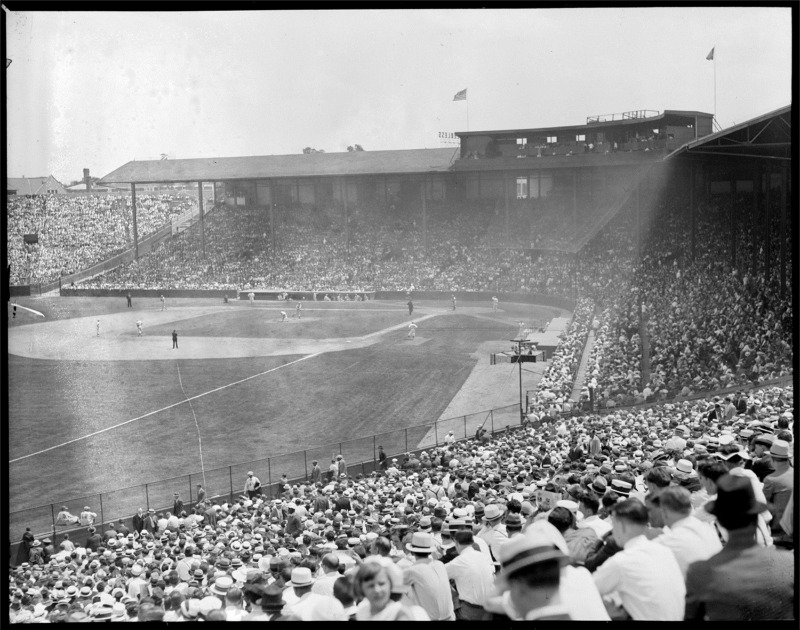Subscribe to Baseball History Comes Alive! to receive new posts automatically
“The Longest Extra Inning Game in Baseball History” Photo Gallery
Click on any image below to see photos in full size and to start Photo Gallery:
The Longest Extra Inning Game in Baseball History!
My last post on the quickest game in baseball history – a 51 minute affair between the Giants and Phillies on September 28, 1919 – got me thinking in exactly the “opposite direction.” What’s the record for longest extra inning game?
Lo and behold, a little research revealed that the longest extra inning game was a 26-inning affair played less than a year later, on May 1, 1920. It was played before 4,500 fans at Braves Field between the Boston Braves, managed by George Stallings, and Wilbert Robinson’s Brooklyn Robins (later the Dodgers).
The Robins were on their way to a 93-61 finish and their second National League pennant under Robinson; while the Braves were in the midst of another second division season, and eventually finished at 62-70 in seventh place.
The game started at the customary time during that era at 3:00 PM, and was called for darkness 26 innings later by umpire Barry McCormack at 7:00 PM, ending the game in a 1-1 tie. The Robins had scored a run in the top of the fifth, and the Braves responded with a run in the home half of the sixth…and the next 20 innings were scoreless.
It was definitely not a good day for the batting averages. An obscure player for the Robins, Chuck Ward, went 0-10; while the Braves Charlie Pick had the worst day of all: 0-11!
In the featured photo above, we see an early photo of Braves Field where the longest extra inning game in baseball history was played.
Believe it or not, the starting pitchers for each team, Leon Cadore for the Robins and Joe Oeschger for the Braves, both pitched the entire 26 innings! Lord only knows how many pitches they threw. And the entire 26 innings were played in just 3:50. Had a game like this been played been today, I’d estimate it’d go at least eight hours. The rosters would be long-since depleted. The way players are moved in and out today, who’d be left to play after about 15 innings?
In addition to Wilbert “Uncle Robbie” Robinson, there were two other future Hall-of-Famers on the field that day: the often-overlooked Zack Wheat for the Robins, and Rabbit Maranville for the Braves. Here’s a few other recognizable players who appeared in the game:
Braves Charlie Pick and Les Mann were two former Cubs who played on the Cubs’ 1918 pennant winner; catcher Hank Gowdy had been one of the stars of the 1914 Miracle Braves and would later make a critical misplay in the 1924 World Series; Walter Holke set the record for the most put-outs by an infielder (46) that day; and “Rowdy” Elliott, I’m mentioning only because he’s another guy with a great baseball name!
Notable Robins included Ivy Olson, still the Dodgers all-time at bats per strikeout leader (26.8); Hi Meyers, who led the National League in RBIs, triples, slugging, and total bases in 1920; and Ed Konetchy, who set a record with hits in 10 consecutive at bats in 1919.
I guess we can all agree on one thing: The game of baseball has really changed over the decades!
Gary Livacari
Photo Credits: All from Google search
Check out my two books, both now available on Amazon in e-book and paperback: “Paul Pryor in His Own Words: The Life and TImes of a 20-Year Major League Umpire”and “Memorable World Series Moments.” All profits go to the Illinois Veterans Foundation
We are a participant in the Amazon Services LLC Associates Program, an affiliate advertising program designed to provide a means for us to earn fees by linking to Amazon.com and affiliated sites. Click here to view Amazon’s privacy policy

